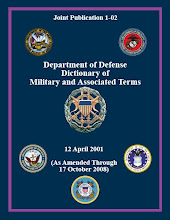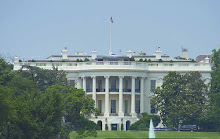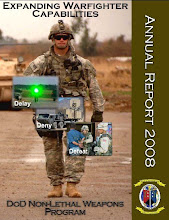 It should be a safe assumption that those reading this blog have some passing interest in Nuclear Energy, either pro or con. Under the rules of full disclosure, my wife was diagnosed with Breast Cancer this past spring (2008) which I attribute directly to our close proximity to Entergy's ancient, trouble plagued Indian Point nuclear reactors which are knowingly (and with NRC approval) leaking both Tritium and Strontium 90 into my environment.
It should be a safe assumption that those reading this blog have some passing interest in Nuclear Energy, either pro or con. Under the rules of full disclosure, my wife was diagnosed with Breast Cancer this past spring (2008) which I attribute directly to our close proximity to Entergy's ancient, trouble plagued Indian Point nuclear reactors which are knowingly (and with NRC approval) leaking both Tritium and Strontium 90 into my environment.As further anecdotal evidence, it is shared here that we have had to put two of our cats down in the past two years, both of them suffering from Indian Point caused cancers. Additionally, Entergy has been doing OFF SITE atmospheric environmental contaminants testing since 2001, but refuses to make that data available to members of the host community. They claim we would misinterpret the radioactive contaminant spikes for something other than what they are. The above information should leave the reader with no doubt that I am not in favor of Nuclear Power under the current rules of engagement that the NRC has with the industry wherein any rule the Licensee cannot meet is A) changed, or B)excused with a generic letter of exemption for the entire nuclear industry.
Jeffrey St. Clair
12/12/2008
Source …..
Nukes Up
the Hudson
These are desperate days for Entergy, the big Arkansas-based power conglomerate that owns the frail Indian Point nuclear plant, located on the east bank of the Hudson River outside Buchanan, New York-just twenty-two miles from Manhattan.
First, a scathing report issued in 2005 by a nuclear engineer fingered Indian Point as one of the five worst nuclear plants in the United States, and predicted that its emergency cooling system “is virtually certain to fail.”
This disclosure was hotly followed by the release of a study conducted by the Los Alamos National Laboratory for the Nuclear Regulatory Commission that ominously concluded that the chances of a reactor meltdown increased by a factor of nearly 100 at Indian Point, because the plant’s drainage pits (also known as containment sumps) are “almost certain” to be blocked with debris during an accident.
“The NRC has known about the containment sump problem at Indian Point since September 1996,” said David Lochbaum, a nuclear safety engineer with the Union of Concerned Scientists. “The NRC cannot take more than a decade to fix a safety problem that places millions of Americans at undue risk.”
Entergy and the NRC both downplayed the meltdown scenario and defended the leisurely pace of the planned repairs. Entergy says that there’s no rush to fix the problems with the emergency system because a breakdown isn’t likely in the first place.
But that’s flirting with almost certain disaster. Entergy and the NRC are staking the lives of millions on odds of a single water pipe not breaking under pressure. The problem is that these very kinds of pipes have corroded and been breached at other nuclear plants, which featured similar pressurized water design. At the Davis-Bessie plant near Toledo, Ohio, a vessel head on one of the cooling water pipes had been nearly corroded away by acid and was dangerously close to rupturing.
The cooling water in these pipes is kept at a pressure of 2,200 pounds per square inch. If a pipe breaks, the 500-degree water would blow off as steam, tearing off plant insulation and coatings. The escaped water will pour into the plant’s basement, where sump pumps are meant to draw the water back into the reactor core. But the Los Alamos tests showed that the cooling water would collect debris along the way that will clog up the mesh screens on the pipes leading back into the reactor. If this happens, the cooling of the reactor fuel would stop, the radioactive core would start to melt, and the plant will belch a radioactive plume that will threaten millions downwind.
Big news in the nuclear arena for February was the NRC's announcement that they would be requiring their licensees to build in protections for accidents and/or terrorists attacks that would involve aircraft, such as the 747 that were flown into the World Trade Centers for all new nuclear builds. Imagine the shock and dismay in every Stakeholder Community playing host to America's 104 ancient, trouble plagued reactors, since we had been told over and over again, as the NRC Rubber Stamped License Renewal Applications, that NEPA did not require them to include the environmental costs of such a accident scenario as it was so remote that it was not even worth evaluating! There decision on new builds obviously countermanded the lies the NRC had been handing out at Public Hearings clear across America.
Being who I am, I immediately shot off a letter of complaint to the NRC in the hopes of having this great wrong against Stakeholders righted. See if you can understand their reasoning in the response to my letter of complaint that is copied below. By the way, any class action lawyers out there looking to make a name for themselves? We need an ARMY of Pro Bono attorneys on this one. With all due respect NRC, your response to my complaint shows you as an agency to be morally bankrupt, or more ignorant than an anal retentive chimp tripping on LSD, and I again go back to the remarks that had my filings in the Entergy License Renewal Case wrongfully thrown out for...you people truly are a bunch of Pro Industry Pricks.
UNITED STATES
NUCLEAR REGULATORY COMMISSION
WASHINGTON, D.C. 20555-0001
March 11, 2009
Mr. Sxxxxxxx Mxxxxxxxxx
Address removed
Dear Mr. Mxxxxxxxxx:
This responds to your February 18, 2009, e-mail to Chairman Klein entitled "Formal Request for action and investigation." In the e-mail, you assert that in public rulemaking, licensing and enforcement proceedings regarding power reactors, Nuclear Regulatory Commission (NRC) officials told the public that there was no need to address terrorism, including aircraft attacks, because the facilities already were safe. You note that notwithstanding these statements, the Commission subsequently approved an aircraft impact rule for new reactors, which suggests--in your view--that the Commission knew all along that the plants were not safe from terrorism and aircraft attack.
It is important to note that Commission decisions that it(NRC) need not consider terrorism as part of its environmental reviews under NEPA, and that it need not include aircraft attacks in its designbasis threat (DBT), are separate and distinct from the Commission decision on the aircraft assessment rule for new reactors. Specifically, the Commission decided that, although operating power reactors are adequately protected with the current DBT, new reactors should be inherently more robust against a possible aircraft impact and, therefore, will have to meet the new aircraft impact assessment rule. Hopefully, this helps clarify what may have appeared to be an inconsistency in the Commission's policy regarding protection against aircraft impacts.
Because you allege that NRC officials deliberately withheld information from the public, lied to the public and engaged in criminal conduct in rulemaking, licensing and enforcement proceedings, your e-mail has been referred to the NRC's Office of the Inspector General for whatever action that office deems appropriate.
Sincerely,
Joseph G. Giitter,
Director Division of Operating Reactor Licensing
Office of Nuclear Reactor Regulation
cc: Office of the Inspector General






























No comments:
Post a Comment